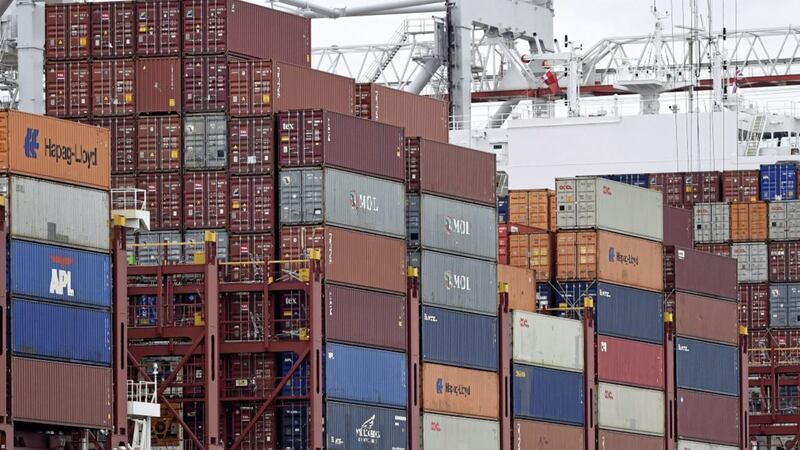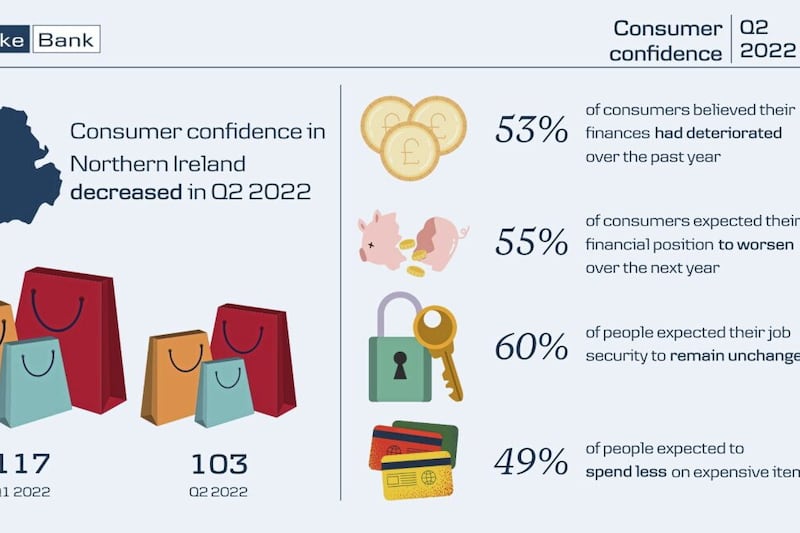IN recent years, the Northern Ireland economy has posted only modest rates of economic growth. This has been the result of a squeeze on consumers’ spending power and Brexit-related uncertainty holding back business investment. But one positive during this period has been the performance of local exporting businesses.
In 2016 and 2017, a number of factors combined which led to strong growth in Northern Ireland’s exports. However in 2018, as global economic growth failed to live up to expectations, export growth didn’t reach the heights of the previous two years. And with recently published business surveys and economic forecasts suggesting that global GDP growth will slow further this year, 2019 could present some challenges for our local exporters.
In 2016 the value of Northern Ireland’s goods exports increased by 9.2 per cent and in 2017 the rate of growth was an even stronger 11.2 per cent.
The region’s largest export commodities are machines & transport equipment, food & live animals, miscellaneous manufactured goods and chemicals. Exports within all these commodity groups increased in 2016, while in 2017 increases were observed in three of the groups, although chemicals exports fell after a particularly strong performance in the previous year.
There was also an increase in the number of exporting businesses during this time. In 2016, the total number of VAT registered exporters increased by just over 240, with a further increase of more than 290 businesses in 2017.
This strong export performance was driven mainly by two things – the depreciation of sterling after the EU referendum and the strength of the global economy.
Looking at annual average numbers, the sterling effective exchange rate index (a measure of the value of the pound against a range of global currencies) was 10 per cent weaker in 2016 than it was in the previous year. And in 2017, the index was down by a further 6 per cent. The weaker value of the pound made the goods being sold by Northern Irish businesses relatively cheaper for buyers in other countries and this contributed to rising exports. However, it is important to point out that the weaker pound also led to higher costs for those businesses that purchase inputs from abroad.
Regarding global growth, in 2017 the world economy grew by a rate of 3.8 per cent which was the fastest rate of expansion since 2011. And at an individual country level, GDP growth in that year was also relatively strong in some of Northern Ireland’s biggest export partners, such as Ireland, the US, Canada, Germany and France. When the global economy – and in particular the countries that Northern Irish firms sell the most to – is growing strongly, international demand for locally produced goods is normally assumed to be stronger.
However, in 2018 the picture wasn’t quite as rosy as global growth cooled. At the start of the year, the International Monetary Fund (IMF) expected global GDP to increase by 3.9 per cent. However, that forecast proved too optimistic and the global economy expanded at a weaker 3.6 per cent.
The value of Northern Ireland’s goods exports did increase again last year, but at a much slower rate of just 1.9 per cent. The number of exporting businesses also rose again, but only by about half the number of new exporters in the previous year.
Looking to 2019, it appears as if local exporters will continue to face challenges as economic forecasts and business surveys point to the rate of global economic growth slowing further this year.
In its April World Economic Outlook, the IMF projected that global growth will slow again to 3.3 per cent in 2019, with growth in the first half of the year expected to be slower than in the second half. That would be the weakest rate of annual growth this decade.
The IMF also expects global trade growth to cool this year and highlighted a number of risks that are facing the world economy, including trade protectionism, the possibility of a no-deal Brexit, weaker than expected growth in China, high debt levels and political uncertainty – all of which have the potential to take the rate of global growth even lower.
The World Trade Organization, in its recently published forecasts, also expects the growth rate of global GDP and world goods trade to be lower in 2019.
And the most recent Purchasing Managers’ Index (PMI) business surveys also point towards slower growth in Northern Ireland’s five largest export partners, which could constrain demand from these countries for the goods produced by local businesses. The March PMI data for Ireland, the US, Canada, France and Germany all pointed towards some weakening in business activity last month.
Over the medium-term, the economic forecasts make for slightly more pleasant reading with the IMF expecting global GDP and global trade growth to rise in 2020 and remain steady in the early part of the next decade.
However, for Northern Ireland’s exporters, the largest determinant of their medium-term prospects will be the outcome of the Brexit process and the long-term relationship that will govern trade between the UK and the EU.
But with a withdrawal agreement still not approved by the House of Commons and the Article 50 process now extended until potentially October 31, negotiations on that long-term relationship have not yet begun.
With global economic growth expected to slow again this year, and with many questions about how the UK will trade with the EU in the years ahead still unanswered, the outlook for Northern Ireland’s exporting businesses appears more challenging than they would like it to be.
:: Conor Lambe is chief economist at Danske Bank
:: Next week: Claire Aiken







